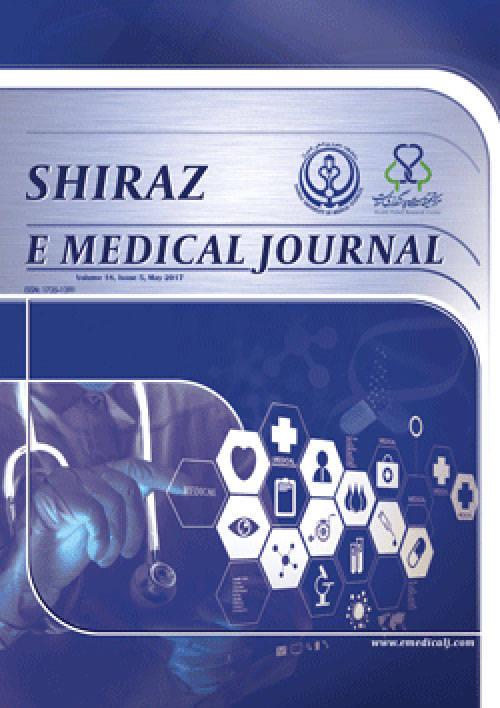فهرست مطالب

Gene, Cell and Tissue
Volume:5 Issue: 2, Apr 2018
- تاریخ انتشار: 1397/01/20
- تعداد عناوین: 7
-
-
Page 1Glaucoma is a group of complex eye disorders characterized by increased intraocular pressure, optic nerve damage, and ultimately, optic nerve cupping, ending in irreversible blindness. The age of onset and the anatomy of the anterior chamber indicate that glaucoma consists of the categories of primary open-angle glaucoma, primary congenital glaucoma, and primary angle closure glaucoma. To date, many loci have shown to be associated with different types of glaucoma; however, the underlying cause of the disease remains ambiguous. Two main approaches exist to find new loci and genes associated with the disease: linkage analysis, which is applicable for large pedigrees with multiple affected and healthy individuals, and a genome-wide association study for large cohorts of sporadic cases. Careful patient selection is the first step in these kinds of genetic research. All subjects selected should be examined to identify the known gene mutations for the specific type of glaucoma. Subjects with no mutations in known genes are possible subjects of a genome-wide association study or linkage analysis.Keywords: Glaucoma, Genetic, Gene, Linkage Analysis, Association Study
-
Page 2BackgroundActivating the calcium-sensing receptor (CaSR), which regulates extracellular calcium, has been suggested to possibly decrease renin expression, thus playing a role in regulating the blood pressure via the renin-angiotensin-aldosterone system.ObjectivesConsidering this hypothesis, the aim of this study was to find the relationship between the gain-of-function variation of the CaSR gene, R990G (AMethodsThe study sample consisted of 121 CHD patients and 105 healthy people from Turkish population. R990G function-gain mutation of the CaSR gene was analyzed by the real-time PCR method.ResultsThe AA genotype of CaSR R990G variation was associated with higher LDL-C, SBP, DBP and lower HDL-C in the CHD group compared to controls (P 0.05).ConclusionsThe common AA genotype of CaSR R990G was found to be related to hypertension in CHD patients while showing a higher association with hypertension, especially in women. We also suggest that the CaSR R990G AA genotype may have diverse effects on serum lipids and that the genetic effect could differ by gender.Keywords: CaSR, Gene, Gain of Function, Coronary Heart Disease, Hypertension
-
Page 3BackgroundUterine leiomyomas (ULs) are benign tumors in the uterus that their growth and progression are stimulated by the estrogen hormone. In the current study, we aimed to determine if estrogen receptor α (ERα) polymorphisms could be used as the markers of the susceptibility to UL.MethodsThe ERα gene polymorphisms of 154 UL women and 186 controls were genotyped by PCR or PCR-RFLP methods.ResultsThe frequency of ESRα PvuII T> C polymorphism genotypes did not differ among the women with leiomyoma and controls. However, the frequency of ESRα XbaI GG genotype was significantly higher than the frequency of AA genotype (27% vs 10%) in UL women and the UL risk was 4.1 folds greater in women carrying GG genotype (PConclusionsThe GG genotype of XbaI A> G polymorphism and TG and CG haplotypes of PvuII T> C / XbaI A> G polymorphisms could increase the risk of UL.Keywords: Estrogen Receptor ? Gene_Polymorphism_Uterine Leiomyoma
-
Page 4BackgroundRecently, findings have validated the significant role of DNA damage genes related to the pathogenesis of breast cancer (BC). The aim of the present investigation was to evaluate possibility roles of two common XRCC1 (rs25487; A > G) and ERCC1 (rs3212964; A > G) gene polymorphisms with the risk of sporadic BC.MethodsIn a case-control study, consisting of 100 females identified with sporadic BC and 100 malignancy-free females as the control group. We used Tetra-ARMS Polymerase Chain Reaction (PCR) and PCR-Restriction Fragment Length Polymorphism (RFLP) methods to determine genotype frequencies of XRCC1 and ERCC1 genes.ResultsThe findings did not reveal a statistically significant difference in the genotype frequencies of XRCC1 and ERCC1 genes between the two groups (P > 0.05). The frequency of G mutant allele for XRCC1 and ERCC genes was higher in cases compared to controls, while the difference between the groups was not statistically significant (P = 0.202; OR: 1.312; CI: 0864 - 1.994), (P = 0.352; OR: 1.213; CI: 0.808 - 1.820).ConclusionsThe current results provide evidence against the hypothesis that XRCC1 (rs25487) and ERCC1 (rs3212964) gene polymorphisms may be associated with a predisposition to sporadic BC.Keywords: XRCC1, Breast Cancer, ERCC1, DNA Repair
-
Page 5BackgroundParatuberculosis, or Johne's disease, is caused by Mycobacterium avium subsp paratuberculosis (MAP) and affects the domestic and wild ruminants worldwide. Fecal culture as well as serological and molecular methods have been used for detection of MAP.ObjectivesThe aim of this study was to compare bovine fecal and buffy coat samples for diagnosis of Johnes disease based on PCR and to find out which one was more suitable for detection of MAP.MethodsFeces and blood samples were collected from 100 suspected cows with clinical signs of Johnes disease. DNA extraction was performed from fecal and blood samples by CTAB and proteinase K method. Polymerase chain reaction (PCR) was used to detect the presence of MAP.ResultsIn this study, 4 cases were positive in buffy coat PCR test and 9 cases were positive in feces PCR test for the detection of MAP. Although fecal culture has been used as a standard method to detect MAP, this method cant detect all positive cases.ConclusionsDespite the fact that DNA extraction from blood samples is easier than that of fecal samples, replacement of fecal PCR with buffy coat PCR was recommended for the diagnosis of MAP. In addition, using fecal samples based on PCR for diagnosis of Johnes disease is considered more efficient.Keywords: Johne's Disease, Cow, Buffy Coat, Feces, PCR

